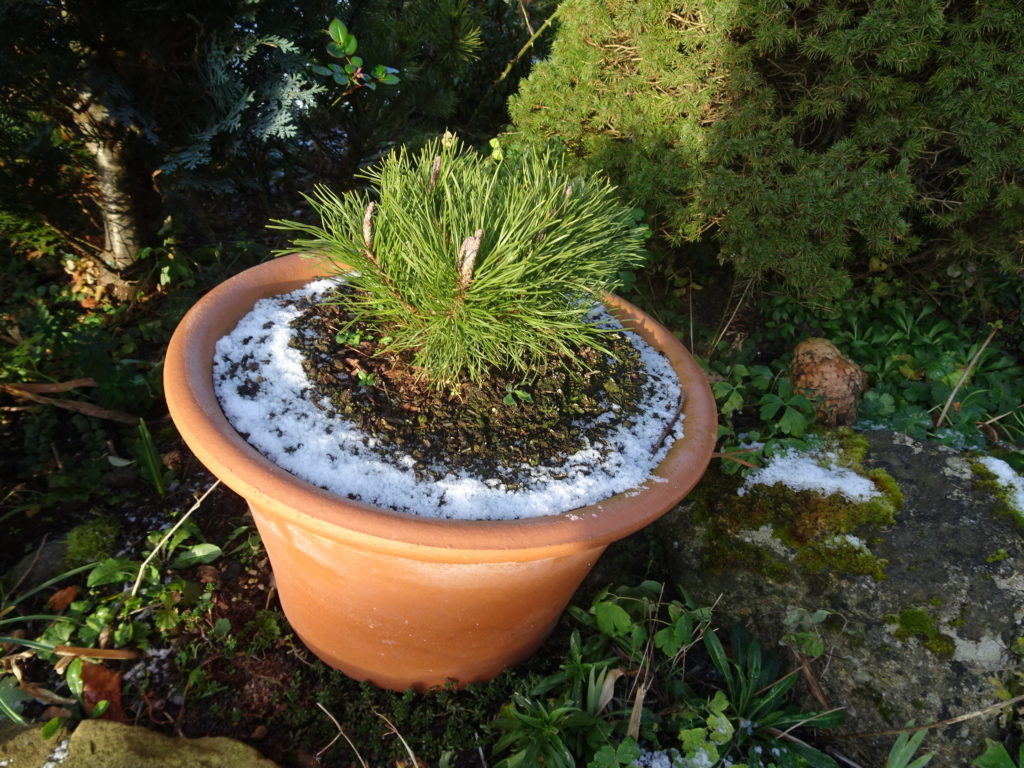Miniature Pines are Smaller than Dwarf Pines
What is a Miniature Pine
- Small pine trees have been grown and sold as Dwarf plants for years but true miniatures are raised as clones from potentially larger species.
- Miniatures are classified as such if they will not exceed 40cm height or width over 10 years. Experts recommend exhibition quality plants should not grow more than 25mm per annum ie. 25cm in 10 years.
- True miniatures are clones of other pines.
- They may grow as spontaneous sports, as bud mutations or seed faults .
- Witches brooms creating miniatures pines are dense growths that result from virus infection or insect damage.
- Bonsai are restricted growth plants and not true miniatures.
Miniature Pine Varieties
- Pinus mugo Donna’s mini 20x30cm cushion form
- Pinus mugo Mini Mini globose habit 20×25 cm
- Pinus mugo Suzi 30x30cm spreading with orange-broan new growth
- Pinus mugo Zwergkugel 35x35cm
- Pinus mugo unicinata Jezek 20x30cm good cushion form
- Pinus mugo Bonsai Kramer 10x20cm
- Pinus syvestris Marshall 30x25cm
- Pinus syvestris beauvronensis ultimate height 24 inches growth 1.5″ per annum
- Pinus strobus
- Pinus uncinata
- There are many other species that sport or produce miniatures but pines are consistent favourites.
Dwarf Species include;
- Dwarf conifers are at least twice the size of miniatures after 10 years. As the sign above shows many conifers are sold as Dwarf plants
- The pine family includes Dwarf White Pine, Dwarf Swiss Mountain Pine,
- Many conifers sold as Dwarf are just slow growers and will continue to grow into sizable trees given time and favourable conditions.
- Dwarf Lebanon Cedar, Dwarf Alberta Spruce, Dwarf Japanese Juniper.
 Collecting and Displaying Miniature Conifers
- Miniature conifer is the catch all name for the smallest of the conifer family.
- The size makes them ideal for use in miniature landscape plantings, alpine or scree gardens, troughs and pots.
- Miniatures are also popular for exhibition purposes.
- Restricting the size of a pot can cause the needles on lower branches to fall
- Top growth shouldn’t extend over the pot. Repot as the conifer grows until you have a pot 36cm or so. There after the miniature pine may be happier in the ground .
- The main shape and forms of miniature pines are conical, globus, pyramidal or spreading.

Growing and Cultivating Miniature Conifers
- Miniature conifers are never likely to outgrow their situation.
- Pot miniatures into a compost of equal amounts of John Innes no.2, grit and composted bark.
- The aim is a tight bun with closely displayed needles and a compact display. Fertiliser is only needed occasionally and in frugal quantities.
- Thatch or dead needles should be removed from inner branches to avoid die-back.
- Shallow, plastic pots are lighter to move around and should not harm the plants.
- Prevention is better than cure so treat for vine weevil and dose annually with a fungicide.
- Top dress annually with compost.
- Outdoor specimens can be trimmed in spring by candling (removing new extension growth) to retain shape.
- Plants can be grafted onto clean longer stemmed rootstock but why would you want a tall miniature.
- Side grafting on to compatible rootstock can be done in January and then kept frost free.
Comment
Miniature conifers and especially pines are worth growing in a cold greenhouse or outdoors. There is a range of shapes and colours to cultivete and a good supply is available from Kenwith Nursery growing miniature and dwarf conifers for the last thirty five years.

One thought on “Miniature Pines are Smaller than Dwarf Pines”
Comments are closed.